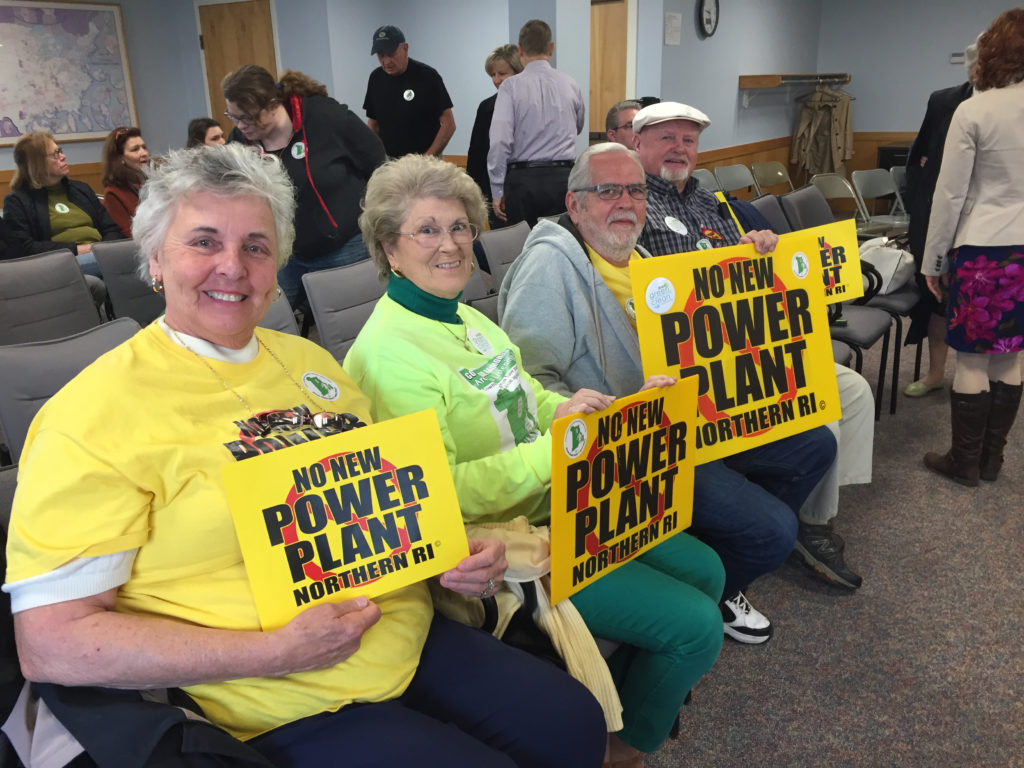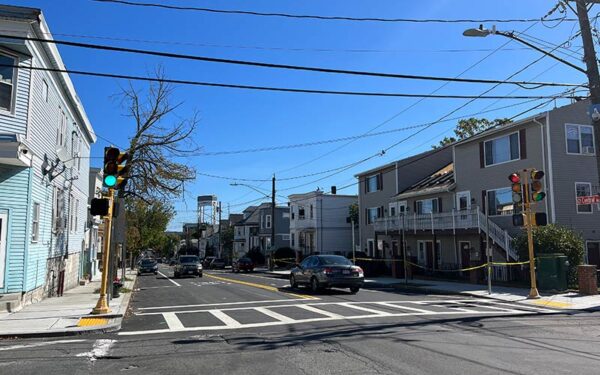
The Final Hearing for Invenergy at the Rhode Island Siting Board has resumed, with hearing dates set for next week and early April. Photo Credit: Bethany Kwoka for CLF
After a month-long hiatus, the Invenergy Final Hearing has resumed. At stake is whether Rhode Island’s Energy Facility Siting Board will grant Invenergy a permit to pave over a forest in Burrillville to build a new fracked gas and diesel oil power plant.
Invenergy is the longest-running case in the 32-year history of the Siting Board. Under the law, the Siting Board cannot grant a building permit unless the plant is needed and building it won’t cause unnecessary environmental harm. With the litigation against the proposed plant now in its fourth year, there is lots of evidence before the Siting Board that Invenergy is not needed; that the plant would make it impossible for the state to meet its short-, medium-, and long-term goals for reducing carbon emissions; and that it would be located in a portion of uniquely valuable forest.
The most important thing to know about Invenergy’s proposed project is that a new fossil-fuel power plant built today will continue belching carbon pollution into the atmosphere until well beyond 2050! And that is just unacceptable. All of the latest leading science shows that we need to reach zero polluting emissions by 2050, and Invenergy would make that impossible.
The Final Set of Final Hearings
Siting Board hearings on Invenergy’s proposal are open to the public. Attending them is a good way for you to show the Siting Board, reporters, and the public that the people of Rhode Island do not want a new fossil-fuel power plant.
The remaining hearings are scheduled for March 26 and 28, and April 2, 11, 12, and 23. These hearings are held in the Public Utilities Commission building at 89 Jefferson Boulevard, Warwick.
Perhaps the most interesting hearing date(s) will be when CLF cross-examines Invenergy project manager John Niland. That is liable to take some time (and be fairly embarrassing for Invenergy), since we plan to walk Niland through a series of lies that Invenergy has told to the public, the Siting Board, the parties involved in the case, our energy grid operator, and the Federal Energy Regulatory Commission. Mr. Niland will be Invenergy’s last witness, and he will go on toward the very end of the Final Hearing (though the date has not yet been set and will depend on how long other witnesses take).
What Happens After the Final Hearing Finishes
Here is what we are expecting after the Final Hearing is concluded:
- First, the parties will be given time to prepare and file Post-Hearing Memoranda with the Siting Board, which sum up evidence from the case and make legal arguments. These replace closing arguments. This process may take four to six weeks.
- After that, the Siting Board will hold several “Open Meetings” at which they will discuss the case. At the Open Meetings, there are no witnesses, and the lawyers don’t talk. The members discuss the case amongst themselves, in front of the public and the press.
- Next, the Siting Board will vote on whether to grant or deny a building permit to Invenergy. At this stage of the proceeding, I am cautiously optimistic that the Siting Board will deny the permit.
- Finally, after that vote is taken, the Siting Board staff still produce a written Order reflecting the decision. This can easily take a month or two, since the Order must address all of the issues in the case: need; impacts on families, businesses, and the environment; traffic, noise, and light pollution; and so forth.
- After this written Order, the losing side can appeal the decision.
This schedule suggests that Post-Hearing Memoranda may be due in late May, Open Meetings may occur in June, and the final Order may come out between July 4 and Labor Day. All of these times are approximate, though!
The losing side has the right to appeal, and that appeal goes directly to the Rhode Island Supreme Court. However, the legal standard applied by the Court is very deferential to the Siting Board, and appeals of this kind rarely succeed.
We Can’t Delay Any Longer
One matter that CLF is especially sensitive to is the risk posed by further delays. It is now widely understood that the plant is not needed and would cause unacceptable environmental harm if built. In this context, Invenergy may seek to slow things down, hoping against hope that some change in the wholesale energy markets at some vague time in the future would change the facts.
CLF will be working hard to move things along as quickly as we can and prevent any more delays. The proposed Invenergy plant is unnecessary and harmful to Rhode Island. It should not be built now, or ever.



